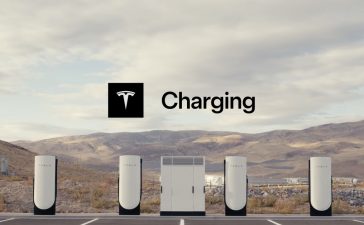After leaving third-party developers of Twitter apps with no information about why their software had stopped working last week, Twitter this week offered an explanation of sorts.
“Twitter is enforcing its long-standing API rules,” the biz said on Tuesday, January 17. “That may result in some apps not working.” It would take two more days for these long-standing rules to appear in the social network’s Developer Agreement.
That document, which now reads “effective January 19, 2023,” contains a previously absent clause under section “II. Restrictions on Use of Licensed Materials.” Here’s how that section reads, with the added c) rule highlighted by us:
This rule forbidding alternative apps wasn’t present in the Developer Agreement the day prior and previously. A January 18 capture of the fine print by the Internet Archive’s Wayback Machine – rules that took effect in October 2022 – includes two b) clauses and a d) clause but strangely no c) clause and no prohibition on creating an app that’s similar to Twitter Applications – the website’s twit-facing products.

Snapshot of Twitter’s Developer Agreement from January 18, 2023, the day before the update … Note the missing c) clause
Twitter third-party developers at last have an explanation for why their apps no longer work with the site: Twitter buyer and CEO Elon Musk was showing them the bird – a revenue-challenged company now hostile to a group previously half-heartedly courted.
Software developers like Icon Factory, maker of Twitterific, and Tapbots, maker of Tweetbot, may now find it difficult to believe that “Twitter loves developers,” as the biz’s developer policy presently proclaims.
These small companies have spent years supporting the Twitter platform and expanding its audience by creating apps that offer a better, or at least alternative, user experience. And now they’ve been banished.
People with visual impairment have expressed dismay because third-party Twitter apps proved more accessible than Twitter’s own client software.
Under previous management, third-party developers merely had to navigate inconsistency and policy chaos, but at least there was some communication. And in the past few years, there was an effort to make amends.
Twitter previously had self-servingly hazy rules that limited what third-party developers could do, but it removed that language in a November 15, 2021 policy update:
Twitter under Elon Musk has a different agenda. Simply disabling developer API access and breaking widely used apps without warning is just “actively hostile,” as Icon Factory programmers put it.
In a blog post on Thursday, Icon Factory announced the discontinuation of Twitterific and lamented its passing.
“We are sorry to say that the app’s sudden and undignified demise is due to an unannounced and undocumented policy change by an increasingly capricious Twitter – a Twitter that we no longer recognize as trustworthy nor want to work with any longer,” the code maker said.
Twitter’s purge of third-party clients could cause harm to development firms not only by denying potential future revenue but also by putting makers of client apps in a position where they may have to refund customers for purchased software that no longer functions.
In its blog post, Icon Factory pleaded with customers not to seek refunds.
“The loss of ongoing, recurring revenue from Twitterrific is already going to hurt our business significantly, and any refunds will come directly out of our pockets – not Twitter’s and not Apple’s,” the company said. “To put it simply, thousands of refunds would be devastating to a small company like ours.”
Tapbots, having laid to rest its Tweetbot app after twelve years, has announced it is working on a client for the Mastodon federated social network called Ivory. ®
PS: It’s reported Twitter now has about 1,300 active employees, which includes fewer than 550 full-time engineers, and about 1,400 non-working employees. That’s 80 percent of the workforce ditched as Musk seeks to slash costs, overhead, people he doesn’t like, etc.











